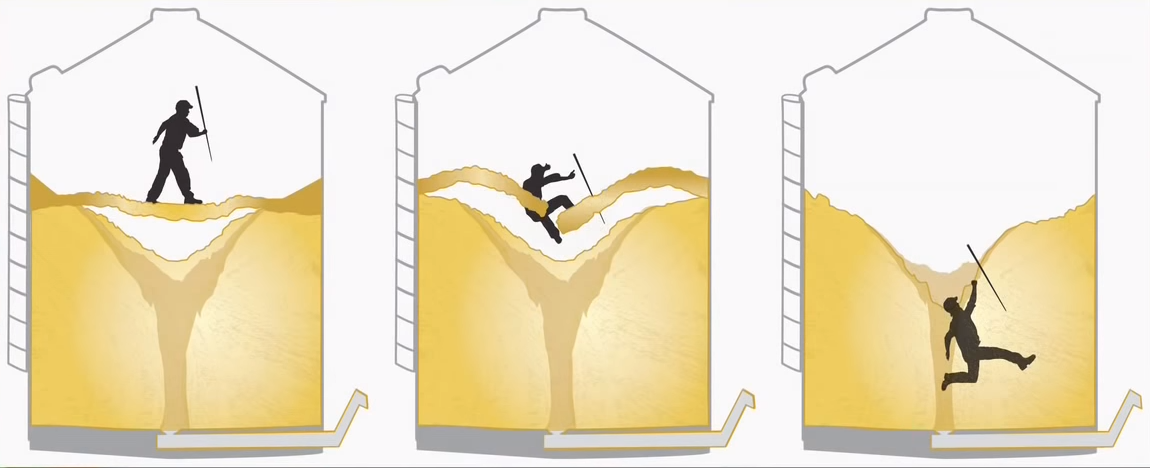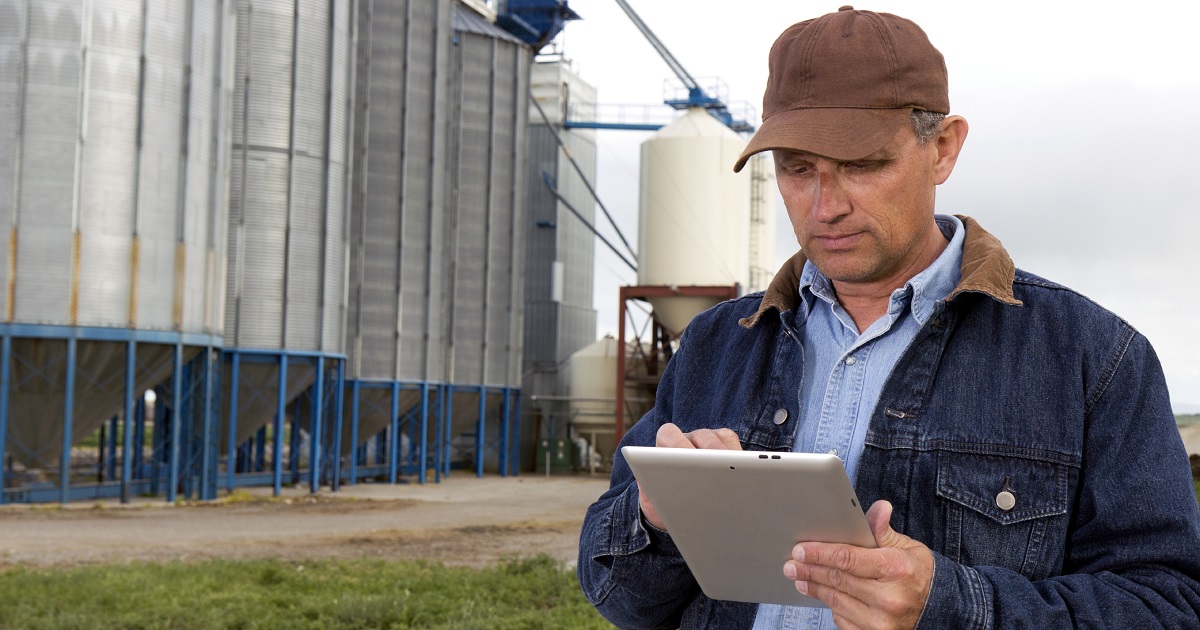For Media Inquiries
Contact Revee White, Director of Marketing and Communications at rwhite1@mem-ins.com or 573.499.4190.
Earlier this year, two farm employees were cleaning out a grain bin, crusted with grain from the previous season. Like many similar grain bins across the country, it was installed about 70 years prior and hadn’t seen any updates or modifications since. It had always worked just fine.
The employees ran the auger to facilitate the cleaning process as the crusted grain fell through the sump – the hole in the bottom of the bin. What they didn’t know was that the bin had a second sump, and neither sump was marked or covered by a protective grate.
A single moment, a lifelong impact
As he waded through the grain, a young employee’s leg slipped into one of the unseen sumps. His leg caught painfully in the auger. The incident required a long extrication process and resulted in a partial amputation of the worker’s leg. This young person now faces the rest of his life with the challenges and complications that come with an amputation.
Neither the worker nor the employer expected this tragic injury. Unfortunately, incidents like this happen every day despite best intentions on all sides. That’s why it’s so important to double check safety measures for every job.
Incident prevention in agriculture
Agriculture is one of the most dangerous industries in the U.S. The rate of injury for agriculture is about 5 per 100 workers – nearly double the average of 2.8 per 100 workers.
Working around farm equipment is already hazardous. Pair that with the lack of safety awareness and training so common in an industry with informal work arrangements: Farm employees are often family members, friends and neighbors. Agricultural work often involves heavy machinery, confined spaces and a host of other risks.
Grain bin safety
Grain bins are some of the highest-risk places to work on a farm. You should never enter a grain bin alone. Always use confined space entry procedures, and shut down and lock augers before entering a bin. Remove crusted grain from the floor or walls of the bin with a long pole. Avoid standing on crusted grain, as it can collapse. In fact, employees should not even stand in grain at all, as it can shift, causing entrapment and suffocation.

Lockout/tagout
In the incident described above, people were working in the bin while the auger was running. This violated a central lockout/tagout principle: never perform maintenance, repair or cleaning on machinery without taking measures to prevent unexpected activation. If you work with heavy agricultural machinery, make sure you have lockout/tagout procedures in place and thoroughly train anyone working with the equipment.
In addition, never tamper with or remove machine guards or shields. In the case of the auger injury, it’s not clear whether the sumps were ever marked or covered by grates – but it’s possible someone removed these safeguards in the 70 years since the bin was installed.
Download our lockout/tagout starter kit to learn more.
Confined spaces
Agriculture work often involves entry into confined spaces. Examples of confined spaces on a farm include silos, storage tanks, material transport vehicles, feed tanks and grain bins. You might not think twice about entering one of these spaces, but it can be very dangerous if handled improperly.
“Confined space entry” begins as soon as any part of the body enters an opening in the space. Only those trained and authorized to enter a confined space should do so. For confined space entry, there are strict guidelines regarding ladder use, fall protection, oxygen level monitoring and more. Be familiar with these guidelines and always take the necessary safety precautions. If anyone is working in a confined space, you must have a written rescue plan and stay in continuous communication during entry.
For more, check out these confined spaces safety rules.
Agriculture safety starts with you
There are many things to consider when it comes to agriculture safety – from safely operating a tractor to documenting lockout/tagout procedures. Often, on-the-job injuries occur because people become complacent or develop the mindset that safety rules don’t apply to them. Start every job with safety, no matter how small or routine the job seems.
For more free safety resources, visit our resource library.
